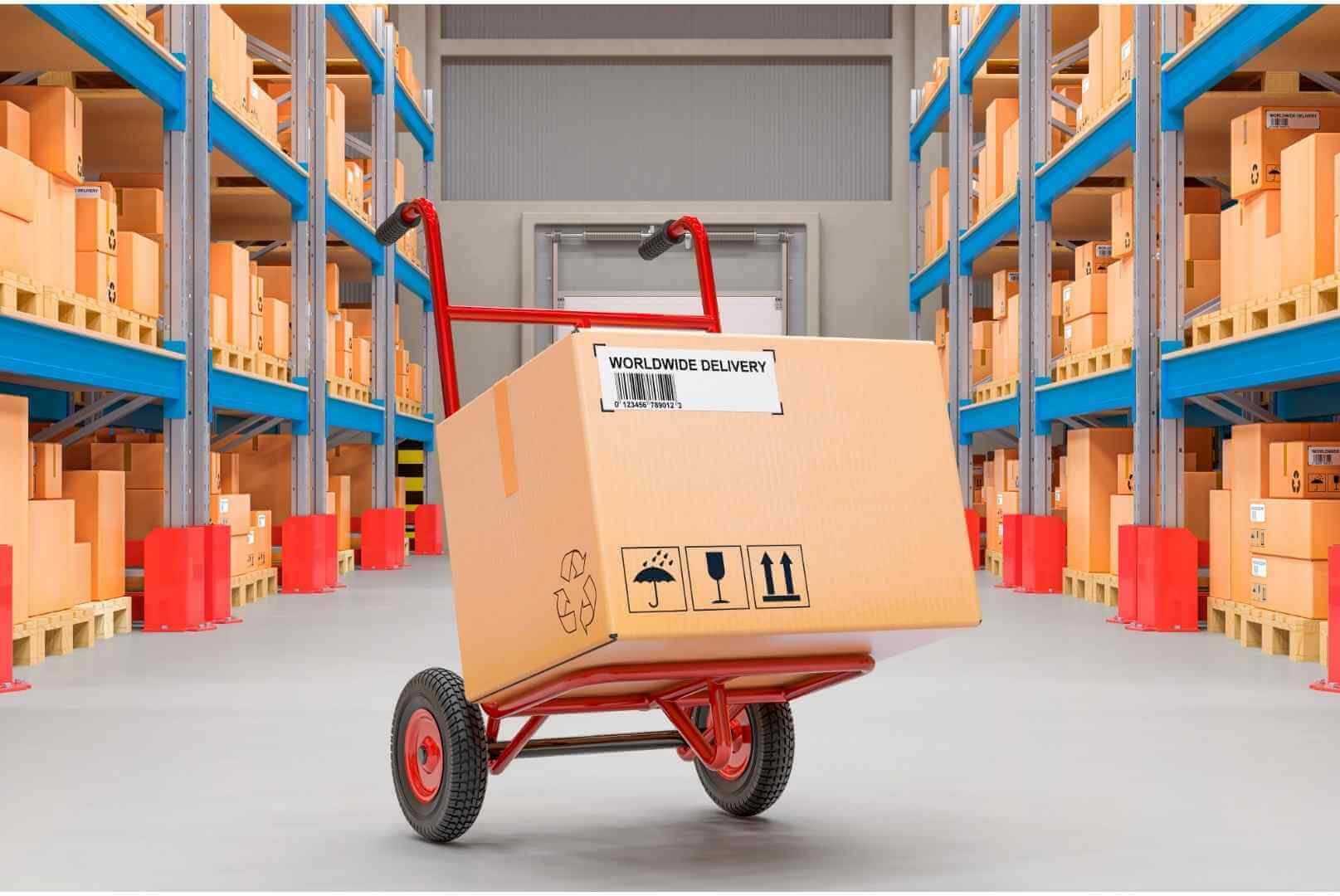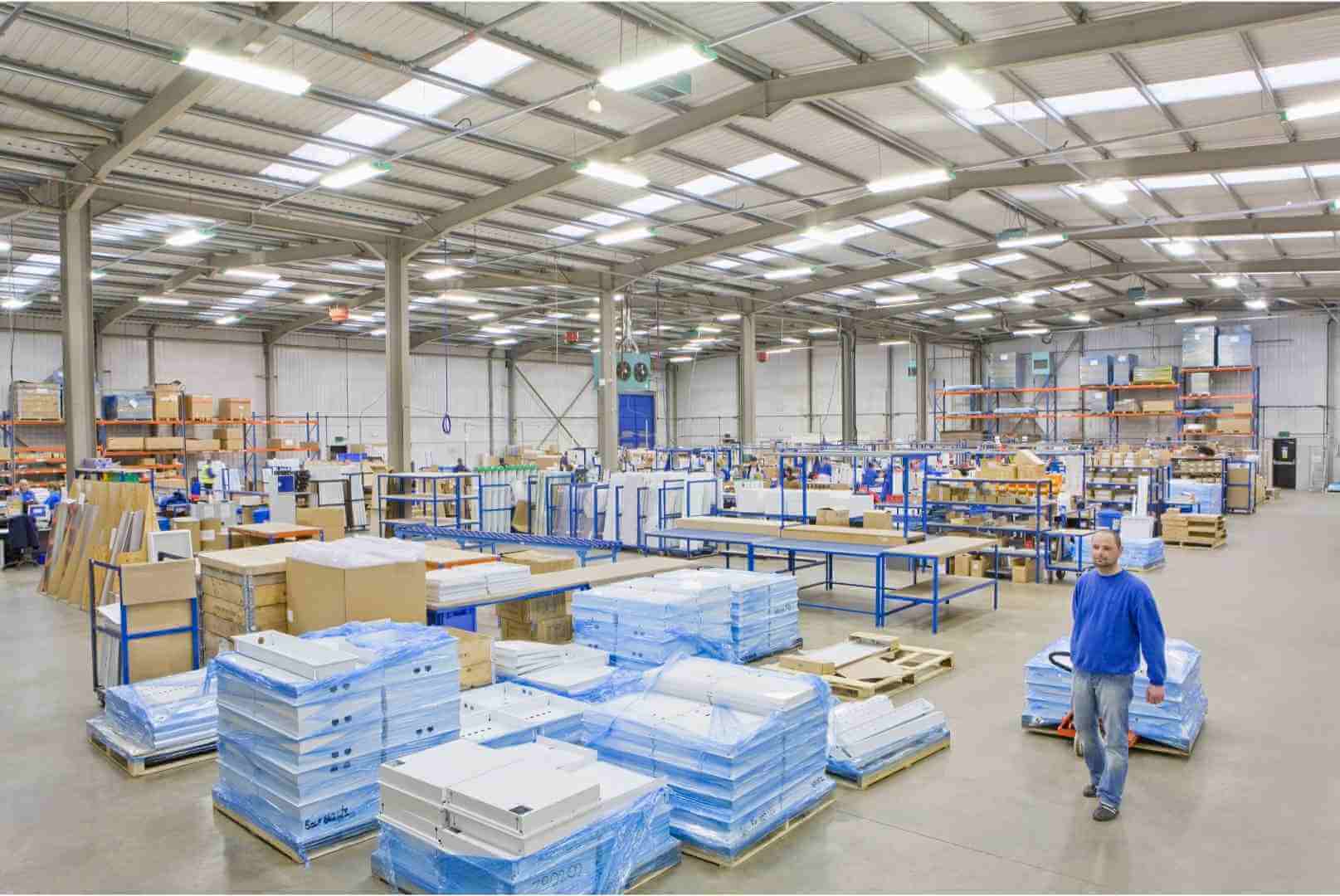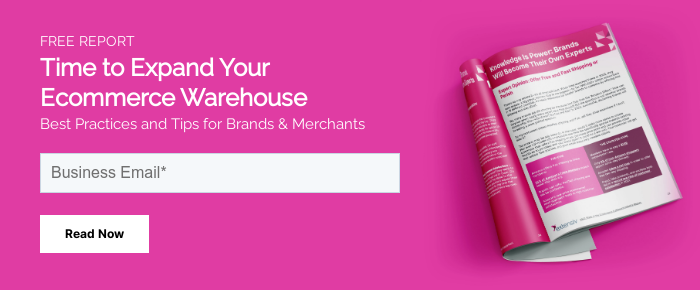Inventory costs are one of the most important metrics to consider if your company hopes to turn a profit. That’s because the cost of inventory has a substantial effect on your bottom line, and can impact your profitability for better or worse (depending on how things are managed). Understanding the nuances of inventory costs and knowing how to calculate them for your own business will be pivotal in strengthening your overall approach to inventory management.
It's also imperative to understand and remember that as your business grows, you may encounter scenarios where managing inventory costs becomes increasingly challenging. At such a pivotal juncture, astute business leaders recognize the need for evaluation and may consider potentially expanding their inventory management capabilities through additional arms, such as partnering with a third-party logistics provider (3PL).
What are inventory costs?
Inventory costs encompass all the expenses associated with ordering, holding, and managing the inventory or stock levels of a product-based business. Total inventory costs are frequently broken down into three distinct categories: ordering costs, carrying costs, and stockout costs. These amounts are often assessed or examined by business owners and/or management to determine how much inventory to keep on hand at any given time.
3 categories of inventory costs

Ordering costs
Every time your company purchases from a supplier, you’ll have to consider the relevant ordering costs; even if the order in question is fairly small, there will always be ordering costs involved. To estimate how much an order is going to cost, you’ll need to track purchase requisition, purchase orders and invoicing, labor costs, as well as fees for transportation and processing. While some of these costs will be relatively insignificant — like preparing invoices, for example — others, like purchase orders, will run much higher.
Carrying costs
Inventory carrying costs (also referred to as ‘inventory holding costs’) are those fees a business pays for keeping its inventory items in stock. Carrying costs can be quite varied, in fact, and include anything from taxes and insurance, to employee costs and the price for replacing perishable goods. Having an accurate view of your carrying costs is critical in knowing how much profit your current inventory can make. Fortunately, businesses can reduce these costs by utilizing an efficient warehousing layout and leveraging innovative inventory management.
Stockout costs
Stockout costs represent any lost (potential) sales from not having enough of a product — that is, the lost income and expense due to an inventory shortage. For instance, this can happen if a customer orders the last unit of a SKU you have in stock, but that item turns out to be defective. Since you can’t ship a defective product (and you don’t have available inventory to fulfill the order), it will be counted as a loss. Alternatively, stockout costs can occur if a customer sees the product they want is out of stock on your website, so they end up purchasing it elsewhere.
7 types of inventory costs to track

1. Storage space costs
Storage space costs cover recurring payments like rent, security, lighting, heating, upkeep, and other utility fees. In addition, they also include the wages for your security workers and janitors (i.e. the labor needed to uphold a clean, safe, and organized inventory storage facility). Although these costs have a tendency to add up pretty quickly, they’re still a necessity considering it’s impossible to maintain an inventory if you have nowhere to store it.
One method for reducing storage space costs over time is partnering or outsourcing storage to a 3PL. The decision to embrace a 3PL is not merely a response to escalating inventory costs; it's a strategic move towards operational efficiency and scalability. By leveraging the expertise of a 3PL, you not only offload the complexities of inventory management and high storage fees, but you also tap into a network that brings cost-effectiveness and agility to your supply chain.
2. Handling costs
Handling costs assist with safe inventory handling at your warehouse; they’re the tools and labor costs of employees who move stock from one location to another within your space. Common handling costs include material handling equipment, forklift truck drivers, and the people who manage your products. Even so, handling costs don’t just include wages — they also extend to any taxes applied by your government, employee benefits, and extra duty hours.
3. Working capital and capital costs
More often than not, capital costs are the highest carrying costs you’ll have to deal with. Capital costs involve the one-time fees required to physically carry and house inventory, such as purchasing land, building, and equipment. However, they’re also linked to any interests on your working capital, as well as the opportunity costs of all the money invested in your stock. You can figure capital costs for yourself by calculating the weighted average cost of capital (WACC).
When capital costs feel too burdensome, outsourcing to a 3PL can be a great way to future-proof your business for scalability. Consider it a strategic investment to ensure that your inventory management evolves in tandem with your company's growth. The journey toward optimal profitability involves not only understanding the nuances of inventory costs but also having the foresight to adapt your strategies when the need arises.
4. Taxes and insurance
Taxes and insurance always seem to present a challenge, and it’s likely business owners don’t look forward to dealing with these aspects of their company. Still, retailers need to take these costs seriously, as there can be huge implications for your brand if you don’t. Since we can’t share any legal advice, you’re encouraged to consult on these issues with a business lawyer who’s familiar with your particular state (and your industry) who can offer more direction.
5. Obsolescence
Obsolescence is an inventory risk cost that’s related to the items in your inventory you can’t shift, or might deteriorate before they sell (think flowers and foodstuffs). In truth, obsolescence can be rather pricey, because you’re effectively leaving cash on the shelf. Products might sit in your inventory for months, causing you to accumulate carrying costs without ever making a profit. Small businesses often incur obsolescence costs, though many of these can be avoided.
6. Investment
At its core, inventory is an investment. But for companies who haven’t yet worked out an inventory management strategy, it can be a costly investment at that. Because every brand has a finite amount of money at their disposal, it’s imperative to use caution as you spend it. When you’re careful with how you invest, you’ll have a better chance of striking the right balance with your resources, so make sure to work out a solid budget you can stick to.
7. Criminal activity
If you fail to implement proper inventory controls, you’re essentially leaving your inventory open to criminal activity, which can be incredibly costly. While theft might be the most obvious criminal activity to try and prevent, fraud and dishonest employees can pose a serious threat, as well. That’s why it’s so important to stay on top of when, where, and how your losses are happening, in an effort to protect your inventory and serve your customers well.
9 mistakes to avoid when managing inventory costs

Underestimating inventory management
If you’ve ever heard someone remark that inventory management is easy, unfortunately, that person wasn’t speaking with a lot of legitimacy. In reality, that’s not much that’s easy about managing multiple locations, reordering new stock, evaluating employee candidates, and reviewing new technologies to implement. And that all goes without mentioning the intricacies of generating reports, cutting out fraud, and identifying when products have gone missing.
Even with the help of proficient, intuitive software, inventory management remains complex; it’s never been easy, and it never will be. Given that inventory management can make or break a company, there’s absolutely no reason you should subscribe to this myth.
Launching a product, then managing inventory
Another common misconception is that you can manage your inventory after your business launches. Say your company makes its debut, and then decides to onboard an inventory management platform — the problem at this point is that your inventory has already had a chance to become disorganized and potentially hurt your bottom line. Like it or not, it’s in your best interest to structure your inventory well in advance of your first sale. Otherwise, you’re bound to run into inventory issues (and related costs) that could’ve been easily avoided.
Thinking that change is hard and time-consuming
The essence of any successful business centers on change and innovation. If a company won’t willfully embrace change, it’s only a matter of time before they’ll need to adjust their mindset in order to achieve growth and keep pace with their competitors. Some ecommerce merchants believe that changing their current systems isn’t a worthy use of their time, money, and energy. But even when implementing an inventory management system takes several weeks or months, in the end, it’s still the ideal way to improve efficiency and boost sales for any brand.
Excluding inventory management from forecasting calculations
Some companies falsely presume they can predict future sales using just their previous sales data. Not only is this untrue, but it can cost small businesses a lot of money they can’t afford to lose. By utilizing advanced inventory management software, brands can improve the precision of their sales forecasts while also tracking other pertinent KPIs. This move will help you follow the right sales trends, maintain the right amount of stock at your warehouse, gauge what SKUs aren’t selling, and calculate the lead time for inventory restocking with ease.
Assuming that inventory tracking is only for pros
Opting to restrict order placements and inventory tracking to a select handful of employees can be an extremely limiting and counterproductive practice. Assuming that inventory tracking is reserved for the ‘pros’ can cause your receiving and purchasing process to bottleneck, which ultimately delays the availability of stock to fulfill customer orders. As long as you have the right software in place and you’re using barcode scanners, there’s no reason why other employees can’t take care of receiving, ordering, and shipping your products, as well.
Purchasing bulk stock to reduce costs
It’s important to remember that bulk procurement doesn’t automatically mean you’re saving money. For example, if someone buys bananas in bulk but doesn’t eat them all before they go bad, that’s money lost that’ll have to be thrown out. The same principles can be applied to business. If your company purchases goods or raw materials in bulk quantities but doesn’t use them before the expiration date, you’ll lose money on those unsold items. And yet, if you insist on bulk buying, be sure to use forecasting data to gauge what will sell (and what won’t).
Understocking to save money
Simply put, it’s risky to have too much or too little inventory hanging out at your warehouse. The goal of every retailer — regardless of their size or business model — should always be to meet customer demand. As long as you have enough stock to do that, you’re likely in a good position. If you’re debating whether to purchase a smaller order quantity to save resources, know there’s a chance you’ll be understocked (which can be costly). That’s why it's been said managing inventory is a balancing act, and one that requires you to wield your budget effectively.
Devaluing the need for inventory management software
The notion that you don’t need any inventory management strategy and corresponding software is certainly a dangerous one. If you’re currently using spreadsheets, checklists, and manual processes to oversee your inventory, your company is probably a prime candidate to benefit from an inventory management system. Not to mention, there’s a good chance your competitors are already taking advantage of this technology. Advanced software solutions are the answer to eliminating human errors and making sure your operations run as smoothly as possible.
Underestimating return on investment
Software and management tools are pivotal for businesses who are looking to scale, since software automates your inventory and takes that hard work off your to-do list. If you’re worried your company can’t afford to implement such software, consider whether you can afford not to. The truth is, many next-generation software options, like Extensiv, offer services at a fraction of the price of others on the market. Extensiv has created inventory software that’s not just affordable, but has all the features and functionality you’ll find with higher-priced programs.
The key to finding the right program is to understand what issues or pain points you need to address. From there, you can evaluate a number of different inventory management systems to make an informed decision on which best meets your requirements and fits within your budget.
3 tips to reduce carrying costs

Know when to reorder stock
Unless you really have a handle on your reorder points and safety stock levels, the possibility you’ll run out of stock (or create an overstock situation) still exists. Those who’ve encountered an overstock know it can be very costly, since you’re carrying products you don’t even need. Thankfully, inventory management software like Extensiv can take the guesswork out of reordering, by predicting likely sales and product demand via accurate forecasting.
Clear out the dead stock
Dead stock refers to the products that simply aren’t selling, and are instead taking up valuable space at your warehouse. Stagnant inventory levels like this can be super detrimental, because they contribute to your carrying costs in a big way. Any item in your inventory costs something to hold onto, so it’s usually best to give up and get rid of your lingering dead stock. This might look like selling a bundle, returning the goods to your supplier, or finding a place to donate them.
Don’t overstock on a deal
As you’re purchasing products from a supplier, you may run into a ‘buy one, get one free’ offer. While this arrangement is beneficial for the supplier (since they can let go of unwanted stock), it can quickly lead to an overstock on your end if you decide to partake. Don’t forget, the more you order, the greater your carrying costs will be. That’s why you’re smart to stick to your inventory management strategy whenever you’re enticed by a deal that sounds too good to be true.
How to calculate inventory costs

Calculating your company’s inventory costs is an important (ongoing) practice, since these costs directly affect your profits and profit margins. While there’s a simple formula you can follow to factor these costs for yourself, you can also opt for a cost calculator to speed up the process.
Use the inventory cost formula
The inventory cost formula consists of beginning inventory value, ending inventory value, and purchase costs over a set period of time. More succinctly, it looks like: inventory cost = [beginning inventory + inventory purchases] - ending inventory. Let’s say your company values its inventory at $100,000 at the start of the year, and buys $25,000 worth of inventory over the next twelve months. If the value of that inventory is $50,000 by the end of December, your inventory costs will amount to: [$100,000 + $25,000] - $50,000 = $75,000.
Use the inventory cost calculator
Those who’d like to manage their costs manually have the ability to do so; however, companies can also call on the help of an inventory cost calculator to automate everything for them. Online calculators are available to help you with this computing, though they’ll still require you to plug in your beginning inventory, ending inventory, and purchases made during that specified period. With that said, automated systems are the most efficient way to improve accuracy, and can take a good amount of work off your plate to invest elsewhere in your business.
Automate your calculation with Extensiv Order Manager
Of the two choices for calculating your inventory costs, using a calculator continues to be the preferred method for most ecommerce retailers. Extensiv Order Manager’s inventory cost calculator has all the efficiency and ease you might need, while offering accurate, trusted results at the same time. With the help of Extensiv Order Manager’s calculator, you can simply enter your beginning and ending inventory numbers, plus the total spent on purchases during your designated time period. Then, within one or two clicks, you’ll have all that cost data right at your fingertips.
How to automate your inventory cost calculation with Extensiv Order Manager
Choosing to automate your calculations with Extensiv Order Manager can save you considerable time and minimize accounting mistakes. By onboarding with Extensiv’s software, your company can reap the benefits of streamlined, reliable automations, which are especially helpful for brands who have complex or wide-reaching inventory networks.
Get a real-time inventory overview
If you’re a multichannel merchant, Extensiv makes it simple to automate your inventory overview for all SKUs across all channels. Thanks to Extensiv Order Manager’s Reports feature, you can dive into detailed inventory data in real-time, so you can clearly see where it is you’re making money, losing money, and which items deserve priority. With the help of precise product and inventory analytics, you can gain greater inventory control to boost your inventory management and maximize efficiency throughout your supply chain and various selling channels.
Reduce costs by liquidating “dead stock”
Speaking of inventory analytics reports, these documents offer a comprehensive record of your purchasing decisions, so you can properly manage the money tied to your inventory services or inventory costs. This includes data on product performance, like how much it’s worth, its sitting age, and its turnover per warehouse — in other words, it reveals the amount of dead stock you’re carrying. With this knowledge, you can then work to liquidate your excess inventory, thus reducing costs on your financial statements and making room for new products.
Make cost decisions based on inventory trends
Extensiv Order Manager also supports enhanced forecasting, purchasing, and supply chain decisions based on a brand’s unique inventory trends. Using this historical data, businesses can adapt their pricing models and optimize their inventory costs, thanks to Extensiv Order Manager’s automatic updates on sales velocity, reorder quantities, and forecasted reorder dates. Making better cost decisions for your company is the surest way to improve your cashflow, experience a greater return on investment, and ultimately, continue to excel in your industry and scale to the next level.



![7 Types Of Inventory Costs & Mistakes To Avoid [+Calculator]](https://20995814.fs1.hubspotusercontent-na1.net/hub/20995814/hubfs/Skubana/Blog%20Pages/Imported_Blog_Media/shopping%20cart%20logo%20on%20box%20seated%20on%20a%20calculator-Oct-12-2022-05-44-35-40-PM.jpg?upsize=true&upscale=true&width=1200&height=800&name=shopping%20cart%20logo%20on%20box%20seated%20on%20a%20calculator-Oct-12-2022-05-44-35-40-PM.jpg)




